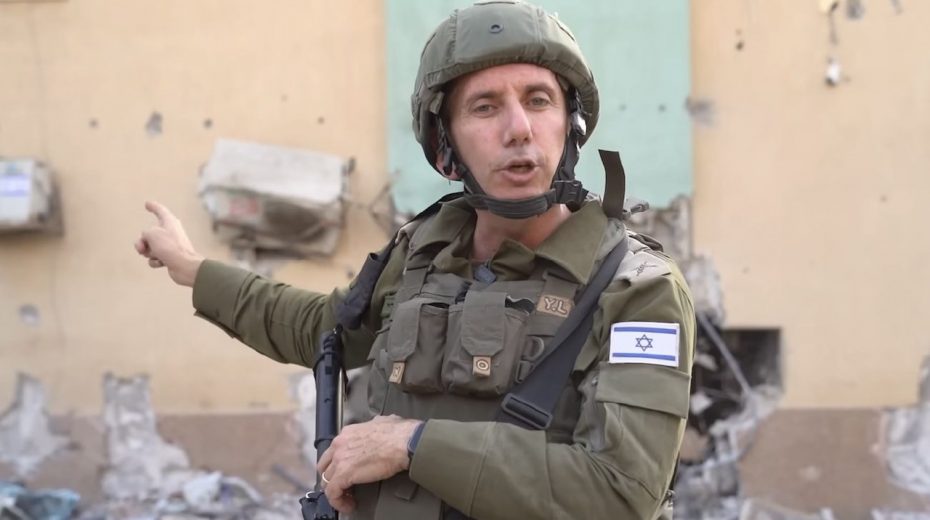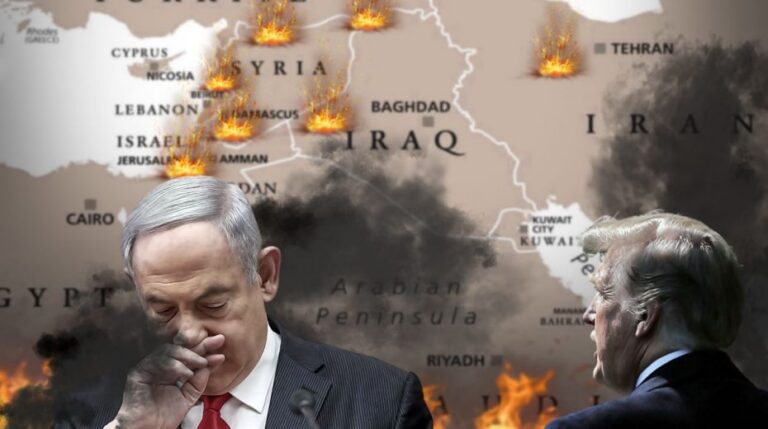
For decades, the Zionist movement successfully portrayed Israel as the victim in the Arab-Israeli conflict. Yet, the emergence of alternative and social media has exposed Israeli crimes more than ever before.
Since its inception in the late 19th century, the Zionist movement has relied heavily on controlling information flow through its international influence to advance its ideology and narrative, paving the way for the creation of its colonial state in Palestine, now known as Israel.
The term Hasbara, which literally means “explanation” and lacks a direct English equivalent, was coined by Zionist journalist and political figure Nahum Sokolow in 1912. Sokolow was noted for his efforts to win international backing for the Zionist cause, especially within European and Western media circles.
Over time, this concept formed the foundation of Israel’s public diplomacy and public relations tactics, used by Israel and its advocates worldwide to justify and promote government actions and policies.
Hasbara seeks to influence public opinion by discrediting and sanitizing opposing narratives that reveal Israel’s human rights abuses, offering misleading defenses instead.
The emergence of Hasbara after Israel’s 1982 Lebanon invasion
Only in 1982 did Hasbara evolve from an oral tradition into a structured, well-funded strategy supported by a dedicated government office aimed exclusively at advancing its objectives.
This entity, known as the national Hasbara headquarters within the prime minister’s office, operates through multiple branches embedded in various Israeli government bodies such as the Foreign Ministry, Ministry of Diplomacy and Diaspora Affairs, Ministry of Tourism, Jewish Agency for Israel, and the IDF Spokesperson’s Division.
In 1982, Israel faced unprecedented scrutiny as it sought to deny responsibility for one of the most brutal massacres carried out by the Israeli Occupation Forces (IOF) since the state’s establishment.
While Israel had committed numerous pogroms in pre-state Palestine and beyond, the Sabra and Shatila massacre was different because it was broadcast on television.
Two years later, the American Jewish Congress hosted a Jerusalem conference to formalize Hasbara as an official PR strategy.
The architects of Hasbara include public relations specialists, media experts, journalists, and leaders of major Jewish organizations.
Given the United States’ role as Israel’s primary backer since 1948, American public opinion has been a central focus of Hasbara.
The massacre at Sabra and Shatila dramatically altered perceptions of Israel, shifting its image from a victim surrounded by hostile neighbors to an aggressor oppressing its neighboring states.
Consequently, Israel vehemently denied any involvement in the horrific massacre and the Lebanon invasion, resorting to the oft-used but flawed excuse of “self-defense,” claiming it acted to eliminate so-called terrorists from the Palestine Liberation Organization (PLO).
This justification was challenged by American media, which for the first time portrayed Israel as an imperial power aggressively interfering in another country.
At the time, US President Ronald Reagan, despite his strong support for Israel, criticized the country for damaging US interests in West Asia and jeopardizing regional peace. He even permitted the United Nations to censure Israel’s conduct.
In a statement dated September 18, 1982, Reagan expressed: “I was horrified to learn this morning of the killing of Palestinians which has taken place in Beirut. All people of decency must share our outrage and revulsion over the murders, which included women and children. I express my deepest regrets and condolences to the families of the victims and the broader Palestinian community.”
Suppressing the truth, a fundamental Hasbara method
Following the terrible massacre in Lebanon, Israel’s ongoing human rights violations in occupied Palestine persisted unabated. Whenever confronted with undeniable evidence of its crimes, Israel often responded not by denial but by attempting to silence those revealing the truth.
Measures have included shutting down media outlets, intimidating journalists and media personnel, detaining reporters, and most horrifically, assassinating them.
Between 2023 and 2025, during its multi-front wars in West Asia, Israel killed over 292 journalists, including 247 in Gaza, 10 in Lebanon, 32 in Yemen, and three in Iran. It also barred foreign media workers from entering Gaza for two years, aiming to prevent documentation of genocide.
Leveraging the Holocaust and faith-based narratives to bolster Israel’s image
The Holocaust has served as a key pillar for the Zionist movement to justify the creation of a “Jewish homeland in Palestine,” reinforcing “antisemitism” as a tool to evoke solidarity and sympathy, especially among European and Western audiences.
Israel has consistently tried to frame the conflict as religious in nature, pitting Judaism against Islam, a narrative that misrepresents the reality.
Through Hasbara, not just Israeli citizens but also diaspora Jews have been mobilized in efforts to combat delegitimization on the global stage.
Israel has organized “birthright trips” to occupied Palestine for young Jews worldwide, framing Israel as the sole refuge for “persecuted” Jews and fostering a connection to their heritage.
Significant efforts have also been made to vilify Palestinian resistance groups and their supporters as antisemitic terrorists aligned with extremist Islamist or radical political ideologies.
The advancement of technology and media tools has weakened Hasbara
Despite Israel’s persistent attempts to mask its crimes via misleading Hasbara, recent years—especially the last two—have witnessed a decline in its capacity to manipulate global public opinion.
As technological innovations have progressed, Israel’s influence in media wars has diminished. Satellite imagery, internet access, and smartphones have increasingly exposed IOF violations of human rights.
A notable example is the use of satellite technology and audio analysis to identify IOF commanders and soldiers implicated in the killing of six-year-old Palestinian girl Hind Rajab, all accomplished remotely without investigators on-site in Gaza.
Moreover, satellite feeds and online platforms have amplified the reach of footage documenting Israeli crimes far beyond traditional TV broadcasts.
Social media, alternative news sources, and international solidarity movements have played a vital role in broadcasting the realities of the West Asian conflict, particularly in occupied Palestine.
The International Peoples’ Assembly (IPA), along with its allies and media outlets, exemplify effective global socialist and labor coalitions uniting struggles against imperialism, capitalism, and fascism, with a strong solidarity emphasis on Palestine.
Furthermore, anti-Zionist Jewish organizations like Jewish Voice for Peace have helped debunk Israel’s religiously framed mythical narratives.
Rabbi Yisroel Dovid Weiss of Neturei Karta, an international ultra-Orthodox Jewish anti-Zionist group, stated, “Because we’re Jews, it’s being done in our name. We have to stand up and yell. It’s not antisemitism to be against Zionism.”
The “Al-Aqsa Flood Operation” shifted the narrative significantly
The two-year genocidal assault on the blockaded Gaza Strip following the October 7 attacks played a crucial role in dismantling Israel’s prevailing narrative.
Despite Israeli and mainstream media efforts to portray the attacks as unjustified aggression against Israel, alternate media revealed the deeper context driving the operation.
The “Al-Aqsa Flood Operation” brought global attention to decades of the Palestinian people’s suppressed struggle, during which the international community largely remained indifferent to Israel’s heinous crimes.
Although United Nations Secretary-General António Guterres condemned the attacks, he highlighted that “they did not happen in a vacuum.”
Israel’s brutal genocidal response exposed the IOF’s cruelty, as they mercilessly killed over 68,280 Palestinians under the pretense of rescuing dozens of Israeli captives held in Gaza.
This violence extended beyond Palestinians to Israeli captives themselves, many of whom were killed by the IOF according to the disputed “Hannibal directive” during the October 7 attacks or amid relentless airstrikes on Gaza.
The operation also highlighted the humanity of Palestinian resistance fighters, who treated Israeli prisoners with compassion in stark contrast to the Israeli regime’s harsh treatment of Palestinian detainees, including women and children.
Despite massive financial investments in Hasbara, Israel has evidently lost grip on controlling the narrative. Millions worldwide have taken part in protests, mobilizations, and online campaigns supporting Palestinian liberation, clearly seeing beyond the manipulation to the true nature of the Zionist project.
Original article: peoplesdispatch.org




